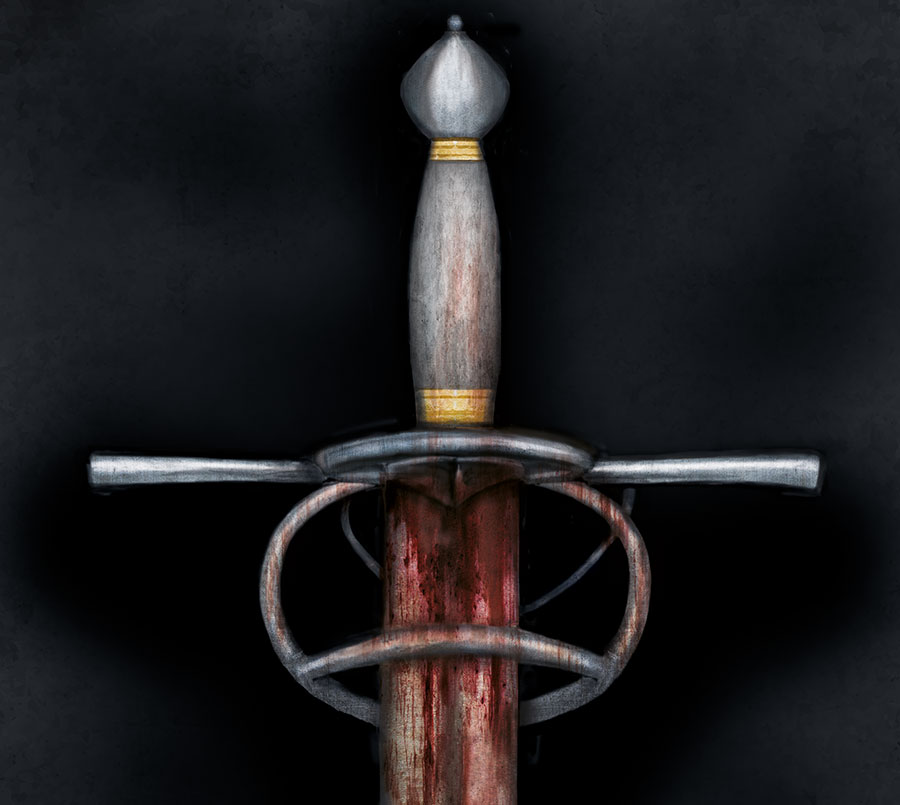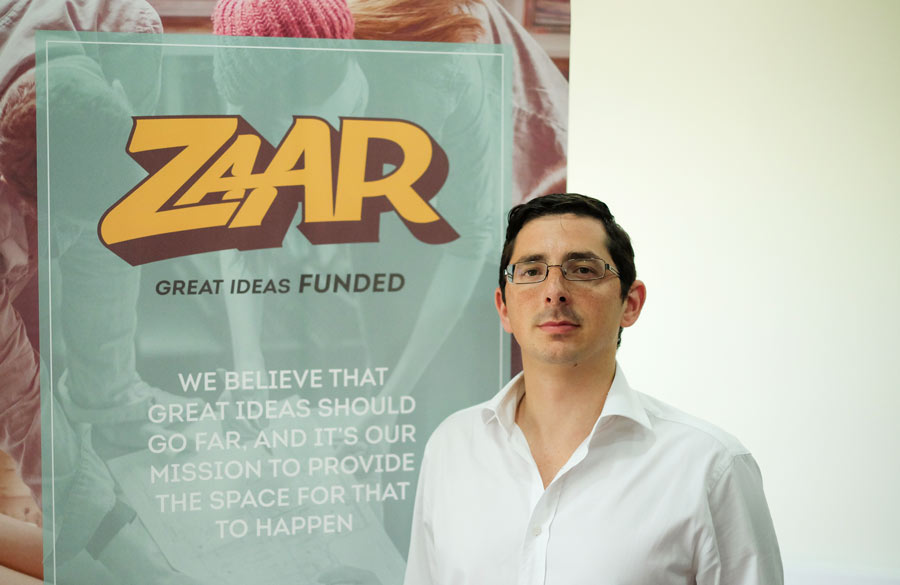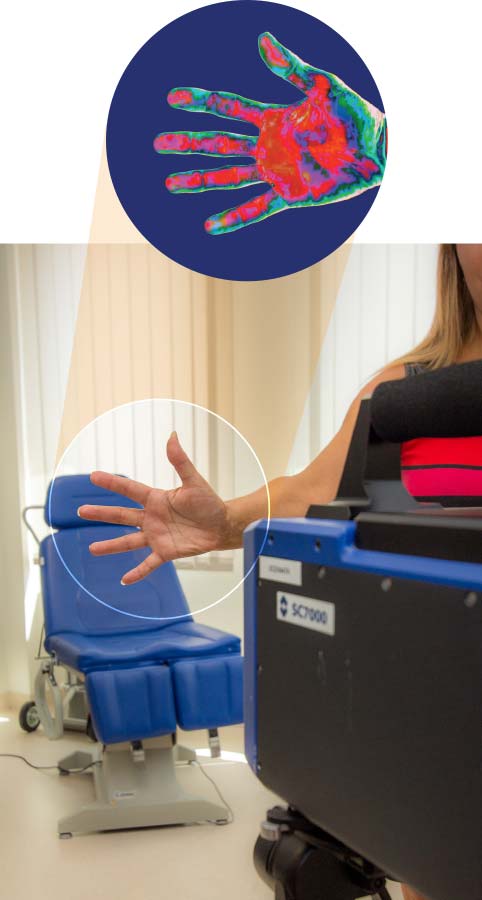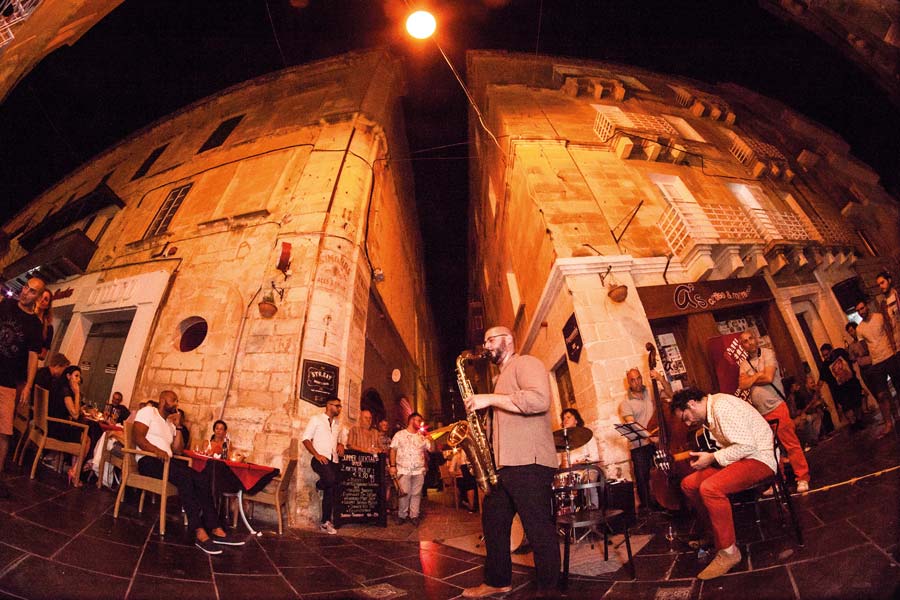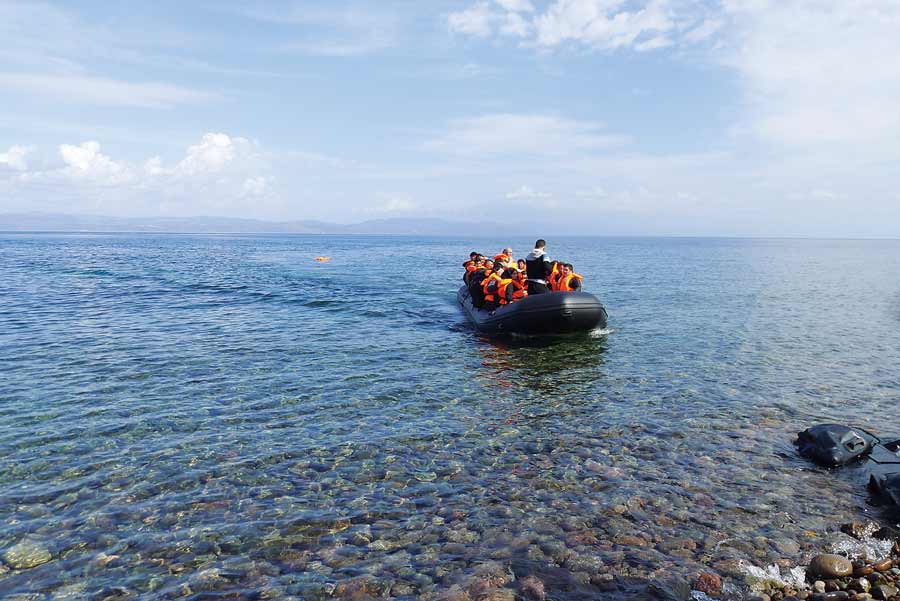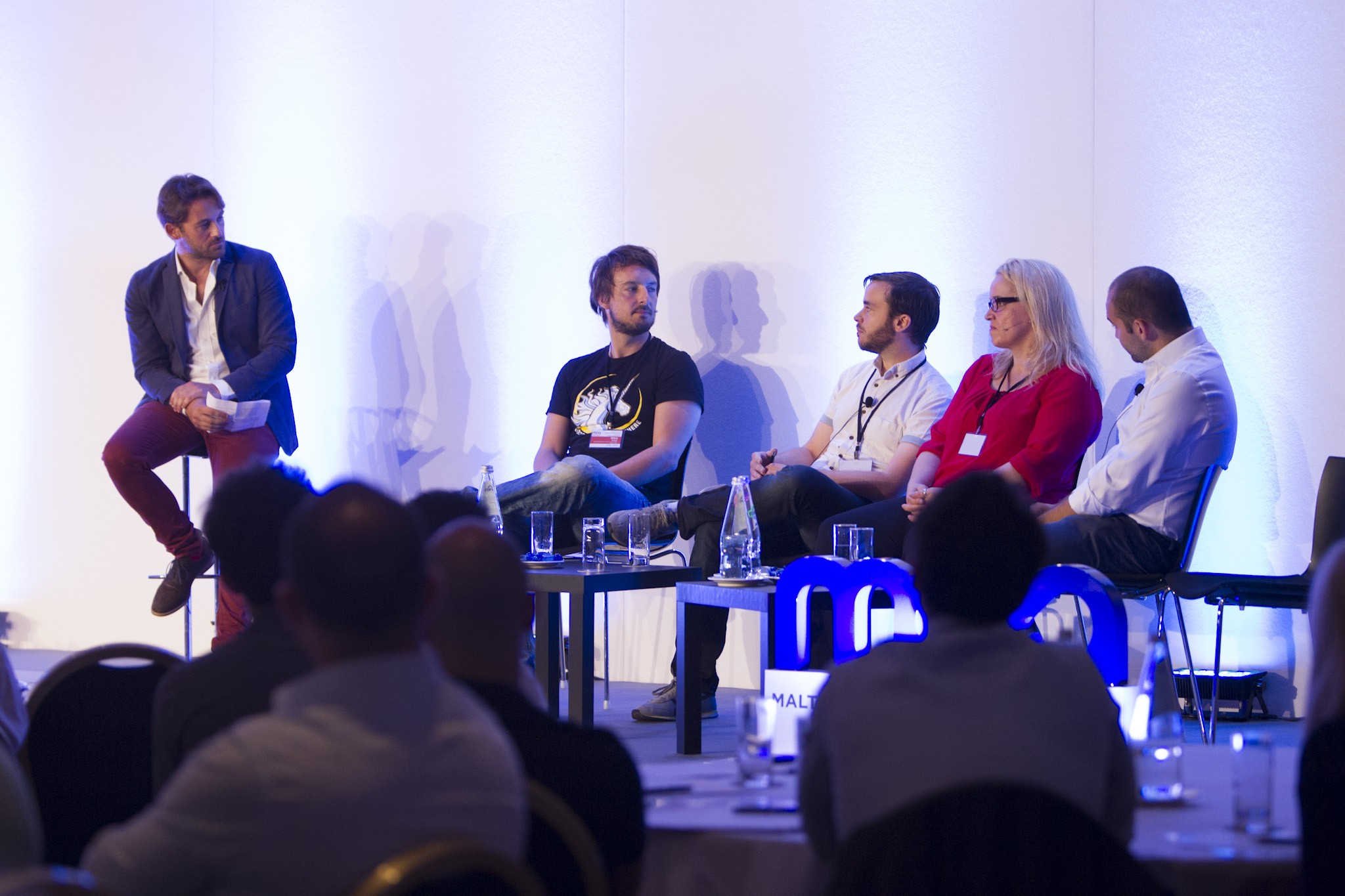A historical discovery does not always equal the unearthing of new documents or artefacts. Sometimes it’s about re-evaluating what we already know. Prof. Victor Mallia-Milanes tells Tuovi Mäkipere more.
Counting pennies for creativity
Crowdfunding has proven to be a revolutionary business-financing phenomenon. From an A to Z list of every indie game, record or publication imaginable, to rebuilding homes, rehoming puppies and sending people to the Olympics, crowdfunding platforms have shown they can be just the right kind of push to get hatchlings to fly the nest. Having a local crowdfunding platform gives entrepreneurs and communities in Malta a unique edge.
Crowdfunding is a place where local ideas, concepts and projects meet and can receive public support. But, in a world of large crowdfunding opportunities across the globe, what does Malta actually stand to gain by having a platform with a local focus?
Financing options on the Maltese Islands are notoriously limited. Over 70 per cent of small-to-medium enterprises (SMEs) resort to traditional lending services like bank loans and overdrafts. Getting a new business off the ground is a daunting task, and 30% of local entrepreneurs admit to finding difficulty in securing investments.
Enter Zaar, the donation and reward-based crowdfunding platform set up by the Malta Business Bureau and the University of Malta [UoM]. The idea initially was to help bridge gaps in the market when it comes to financing for start-ups, innovation, and research projects. A local crowdfunding platform helps local companies by bypassing the legal and bureaucratic obstacles that come with using international platforms. While projects targeting Maltese recipients benefit from local context and backing, backers need not be based in Malta at all. By giving local creators the space to attract funding in the most efficient way, Zaar aims not only to fuel dreams, but to fulfil them.
That being said, Zaar is not just about financing, and one of the company’s core values is about getting good ideas out in the open. In operation for seven months, the platform has managed to fund everything from album launches to charity events. Some of the most successful offspring to date include: a soon-to-be launched Pet Cabin at Mater Dei; eeMod—a modular and multi-functional platform for makers, engineers, and students; funding for the UoM student racing team to build a new formula style car; and a project to bring graphic novels to Malta’s Public Library. Without a little push from Zaar to get public interest going, none of these projects may have made it.
Local crowdfunding also opens up new avenues for researchers and their projects. Governmental and EU funds are becoming harder to come by, but Zaar ensures that every researcher who has ever been told that their field lacks the appeal for funds, at least has the opportunity to try. For the first time, people have the chance to fund studies that they want to see done, and the thought of that is genuinely exciting.
Crowdfunding is going to be a game changer for innovation, and Zaar has the first pin down on the local map.
Attacking the silent epidemic of diabetes
Diabetes prevalence is burgeoning on a global scale. In 2012, 1.5 million people worldwide died as a direct result of the disease, cementing it as an epidemic. By 2030, diabetes is expected to become the world’s seventh leading cause of death. With 12% of the Maltese population suffering from the disease, a research team has come together looking into new methods of detection to stop the disease in its tracks. Words by Yasmine Gatt.
Politics, policy and risky business
As a child, Prof. Noellie Brockdorff was fascinated by the robots that inhabited the world of Isaac Asimov’s novels. She wanted to know why humans are different to robots. So why are human beings not perfectly rational creatures like robots? Dr Claude Bajada finds out more.
PORN: How Do We Feel About It?
Around 13% of all internet searches can be linked to keywords related to erotic material, while by 2017 it is estimated that about a quarter of a billion people will be accessing pornography on mobile devices. While by far not a recent phenomenon, the widespread use and growth of the internet has made pornography common and easy to access. So why pornography? What more do we really need to know? And what is the point of such research anyway? From a psychological point of view, the visible increase of use needs to be studied, particularly in Malta, since very little research has been conducted.
Nicola Falzon (supervised by Dr Nicholas Briffa) focused her undergraduate research on the attitudes towards pornography; she looked into the literature regarding the effects of addiction, among other psychological implications. Despite the grave implications the field may imply, this study showed that not all effects are necessarily detrimental. University of Malta (UoM) students were found to have a fairly relaxed and liberal attitude towards it.
Raw data was collected through online surveys, of which 261 UoM students participated. The data was analysed using SPSS and data sets were compared between males and females, older and younger adults, and then compared to previous local and international research. Similar to information obtained through literature reviews, the results showed significant differences in the attitude towards pornography between men and women. Males were shown to watch pornography more frequently and had a more positive attitude, while females considered pornography to be harmful. However, both males and females answered similarly on the majority of survey statements.
Attitudes towards porn might be more similar than previously assumed. There were no significant age differences in the frequency of use or views of porn as harmful. Younger adults displayed a more positive attitude to porn than their older counterparts. Finally, while most female respondents agreed that access to pornography should be restricted, a strong majority did not agree it should be illegal.
So, what is the point of such research in the first place? Primarily, further studies into pornography can contribute towards the field of psychology, first by deepening the understanding of the phenomena, and secondly because it directly effects how treatment can be improved when porn causes a negative effect. Also, new methods of therapy and counselling could be developed to help with addiction that can cause relationship issues. Other problems include excessive masturbation that can lead to isolation from real life relationships and sexual practice. Research can also help influence changes in social policy, for example by including ‘Porn Literacy’ in sex education—currently absent. In Malta, 41% of 16- to 18-year-olds are sexually active; many learnt about sexual practices and pleasure from the internet, films, and video. It is no longer convenient to remain naïve at the expense of public health.
This research was carried out as part of a Bachelor in Psychology at the Faculty for Social Wellbeing, University of Malta.
by Nicola Falzon
Cultural Regeneration through Urban Spaces and Places
The effects of a European Capital of Culture are felt through both the cultural activities that take place and through the interactions people have with each other as well as the space around them in their everyday lives.
The Valletta 2018 Foundation has been working tirelessly on several projects preparing Valletta for its title as European Capital of Culture in Malta in 2018. More so, it is researching how these projects are changing the lives of people.
These interactions between communities and their surrounding space are key issues being investigated by the Valletta 2018 Evaluation & Monitoring research process. This is a five-year research study examining the impacts of the European Capital of Culture on Malta’s society and economy.
Dr Antoine Zammit, with the Valletta 2018 Foundation, has been studying the relationship between community inclusion and space in cultural infrastructural projects. His research focuses on four specific infrastructural projects taking place in Valletta as part of the European Capital of Culture: The Valletta Design Cluster (il-Biċċerija) and its surrounding neighbourhood; Strait Street; the relocation of MUŻA – Mużew Nazzjonali tal-Arti (Malta’s National Museum of Fine Arts) – to Auberge d’Italie and Pjazza de Valette; and the area surrounding the Valletta Covered Market (is-Suq tal-Belt).
The four projects are in different stages of their implementation, and have been dispersed throughout Valletta in a way that allows them to collide with many of the different districts of the capital. While none lack cultural significance, each project has displayed different strengths in implementation. The Valletta Market and Strait Street Projects have a particularly strong commercial value, while the Valletta Design Cluster is aimed at creative design and encouraging entreprenuership. MUŻA, more overtly than any of the other three projects, is an attempt at traditional forms of cultural engagement and regeneration through the development of a national, community-driven musuem of art. Zammit, together with two M.Arch. (Architecture and Urban Design) students—Daniel Attard and Christopher Azzopardi—carried out extensive studies to gain a deeper understanding of the sites.
“Quality urban design has increasingly become about creating these habitable places. It is ultimately all about the quality of life of residents.”
Attard developed a matrix in order to score the different types of interactions within each site. Split into categories such as ‘aural’, ‘user categories’ and ‘actual use of space,’ the sections help identify emerging patterns and traits from the implementations of the projects. The Biċċerija and Strait Street all score high in the ‘aural’ category, meaning various elements that contributed to noise, or the lack of it, were observed. MUŻA and the Covered Market both qualified for the ‘user categories’ section, meaning that a relatively diverse demographic was observed making use of the place. The Valletta Design Cluster was noted for having a higher level of human interaction take place daily (balcony conversations, loud conversations in general, and so on). Finally, all four sites qualified for the category of ‘actual use of space,’ meaning that people actively show awareness of the space by taking photos, complaining due to lack of public conveniences, construction work, and shops setting up or closing down, among other things.
On the other hand, Azzopardi focused on the spatial quality of the sites by looking at their accessibility and permeability, perception and comfort, and the vitality of the four sites. Of the four, Strait Street, more specifically the intersection with Old Theatre Street, scored highest, followed by MUŻA and the Valletta Market. The Valletta Design Cluster obtained the lowest score, suggesting that the site in its current state is poorly perceived and somewhat inaccessible. Matching Azzopardi’s findings with statistical data, obtained at a neighbourhood level through the NSO’s evaluation of the available 2011 Census Data, Zammit has determined some relationship (but not statistically significant), between the buildings’ current state of repair and the community’s achievements in literacy, education, and employment.
| Museum of the People |
|
Naqsam il-MUŻA is a branch project inspired by MUŻA. Currently in progress, participants in the Naqsam il-MUŻA project were selected from different communities around Malta and taken to see the art collection of the National Museum of Fine Arts. They will then exhibit their choice of artwork from the museum in their localities. It brings the museum to the people, rather than the other way round. |
The diversity of the four sites were key to Zammit’s studies. He studied the effect their differing cultural infrastructure had on the cultural regeneration of Valletta. ‘Cultural infrastructure entails those interventions, which generally have some kind of physical implication, in an urban space which tends to enhance and broaden people’s cultural appreciation,’ explains Dr Zammit, ‘but I see it as requiring an added value. In my opinion, art for art’s sake in these cases doesn’t mean anything. Which is why the question which I try to answer in my research is, “what will that infrastructure give back to the community at the end of it all?”’ Other research, similar to Zammit’s, holds that more than just creating spaces, cultural regenerative projects should aim to create places which result from quality urban design. ‘Over the past two years, I started to realise that the real difference is ‘between places that are alive, versus habitable places,’ comments Zammit, who thinks that, ‘quality urban design has increasingly become about creating these habitable places. It is ultimately all about the quality of life of residents.’ This issue of liveability is key to being a European Capital of Culture. Its goals are to create high-quality cultural and artistic activities while improving the quality of life of communities through culture. Zammit’s study highlights many potential issues such as an increase in noise pollution, gentrification resulting from a rise in property values and rental prices, and other potential impacts on Valletta residents. The Valletta 2018 Foundation is discussing these issues in its upcoming conference Cities as Community Spaces in November 2016, which will bring together a number of international speakers to explore how different communities make use of public spaces for creativity, contestation, and interaction.
For more: valletta2018.org
Care till death do us part
Prof. Pierre Mallia talks about an end-of-life project that seeks to overcome misconceptions about unnecessary treatments and pain while dying.
Continue readingFrom Immigrants to Theology
Over 1.82 million migrants entered the EU in 2015 and this has triggered much dialogue across member states. In May 2015, the Archbishop of Malta, H.G. Mons Charles J. Scicluna, after the Vatican announcement of the Year of Mercy, reached out to the academic community to reflect on the immigrant phenomenon. This call set in motion The Mercy Project, which aims to create a set of reflections and recommendations around immigration.
The project has four stages. It first reflected on the issues of mercy and immigration within the Maltese context. During this stage, staff members from various University of Malta (UoM) faculties explored the local situation, reflecting on the terminology used, prevailing concepts and current practices. This was followed by a second stage. Academics held meetings to discuss various viewpoints and realities around migration. Those involved included members from the Faculties of Theology, Arts, Social Wellbeing, Laws, Education, and Health. At the third stage, a symposium on ‘Mercy and the Immigrant’ was held on 6 June 2016. The symposium brought together interested parties and agency representatives to reflect on the issue. This provided a platform for a dialogue between theologians and society. Rev. Dr René Micallef S.J. (Gregorian University in Rome) spoke about the mercy, justice, and policies needed to be considered by Malta and the rest of the EU.
The final forth step is underway. A publication of the project’s position papers is being prepared. This will make available to various sectors of the public some of the philosophical, social, legal, educational, and theological ideas which surfaced during the project’s dialogues and consultations. It will provide concrete recommendations for the University of Malta, State, and the Church.
Dr Pauline Dimech and Rev. Dr Stefan Attard are the project co-ordinators.
What Do You Need to Setup An Indie Gaming Community?
Joseph Aldape met indie game developer Rami Ismail to chat about indie gaming communities.
Tenor Joseph Calleja to open start-up conference
Start-ups to change a country. Lars Lorenz meets TAKEOFF Business Incubator manager Andy Linnas to find out more.
Start-up companies have evolved from being nice to have into a must have. Traditional business models cannot match their capacity to advance into uncharted territory and risk taking abilities. Banking, media, telecommunication, and manufacturing are only a few examples that have changed heavily since the start-up culture exploded. The rapid change has uncovered major challenges. Networks are lacking, allowing for no easy way to collaborate or share ideas, which is key for young start-ups to succeed. The gap between small businesses and established companies is undesirable to sustain a healthy economy.
 The ZEST conference offers a unique opportunity for entrepreneurs, managers, students, and those interested in business to chat and share knowledge. The two-day event is organised by the Malta Communication Authority in collaboration with the TAKEOFF Business Incubator (University of Malta). Armed with their past experience the team invited more than 34 different speakers. Contrary to other events, ZEST throws excessive formalities out of the window and focuses on creating an enjoyable atmosphere instead.
The ZEST conference offers a unique opportunity for entrepreneurs, managers, students, and those interested in business to chat and share knowledge. The two-day event is organised by the Malta Communication Authority in collaboration with the TAKEOFF Business Incubator (University of Malta). Armed with their past experience the team invited more than 34 different speakers. Contrary to other events, ZEST throws excessive formalities out of the window and focuses on creating an enjoyable atmosphere instead.
The venue, Westin Dragonara Resort’s Conference Centre, is outfitted with a tech demo space, piazza, and co-working area. The setup encourages chats in breaks and between talks to share ideas and encourage participants to start working on their next big project. ‘ZEST tries to be an event not just for techies. It caterers to everyone’s interest,’ says Andy Linnas. Their unusual approach is clear: the famous tenor Joseph Calleja is opening the conference to talk about the classical music and opera industry.
Malta stands to gain by opening up internationally. The Islands can show what it has to offer, while local businesses can obtain fresh inspiration from abroad. Even established companies can benefit immensely, since they need start-ups to innovate. Conquering emerging markets quickly is essential to staying competitive, but big business cannot adapt that quickly. They need start-ups to go into these niches for them, and in turn large corporations need to provide the necessary resources to do so.
‘If businesses don’t prepare and become flexible and open to change, many may lose out on this revolution.’
Linnas experienced the possible impact of such events first hand during Latitude59, a big start-up conference in Estonia. It is now in its 9th year, but beforehand Estonia hardly had a start-up culture. Today the landscape has changed. Whole parts of the city have been refurbished into modern areas filled with restaurants, office space, and apartments, ready for people from all around the world to move in. Having that international talent intertwining with the Estonian community allowed start-ups to raise over €100 million of investments that created thousands of jobs. This movement placed Estonia on the map. ‘I believe society will always benefit from startup culture and we can make this happen in Malta,’ Linnas envisions.
ZEST is the first step in that direction. It will be happening from 27–28 June at Westin Dragonara Resort, St. Julian’s. Prices start at €149, while university staff and students are being offered special rates. For more information visit their website or contact ZEST directly.

